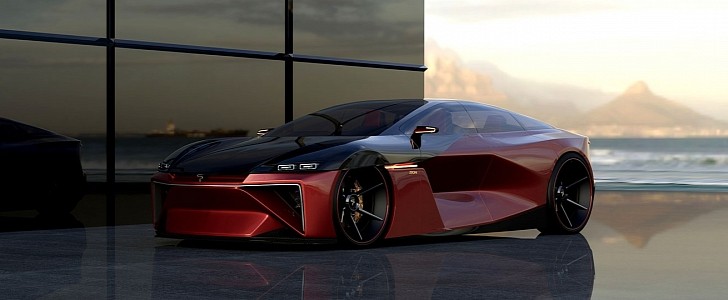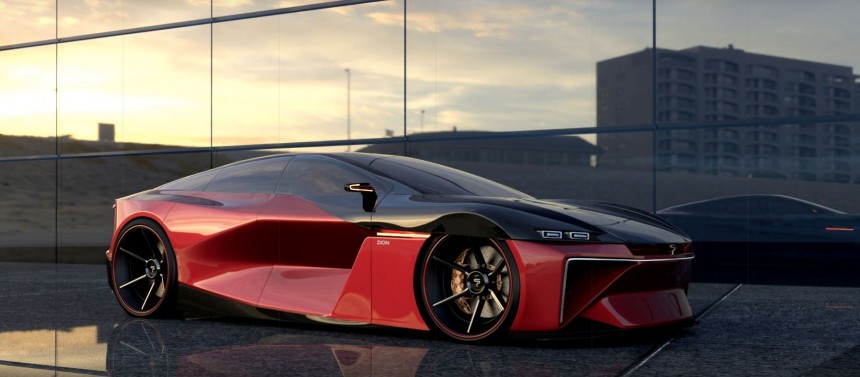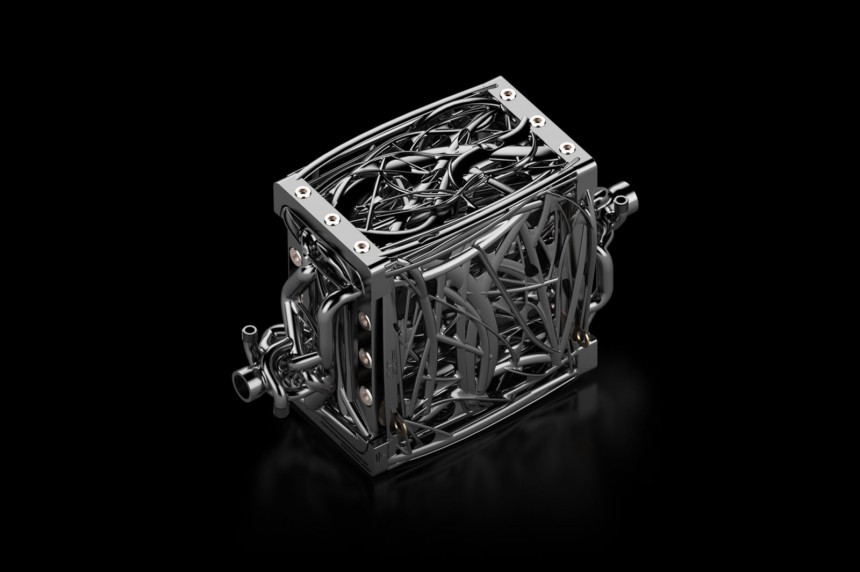SP Automotive might be a new name on the scene, but the man behind it is anything but. Greek drag racing tuner Spyros Panopoulos has ideas for a very innovative and incredibly fast future, and he’s now ready to share glimpses of it with the world.
Some hours ago, SP Automotive (formerly Spyros Panopoulos) introduced Chaos, the $14 million ultracar that will develop over 3,000 horsepower and 1,463 lb-ft (1,983.5 Nm) of torque in something called “Zero Gravity Mode.” Chaos aims to become the world’s fastest production car and will only be made in a very limited number because… well, the answer is obvious. Not every driver is fit to drive such a thing, assuming they could afford it in the first place.
For more “casual” drivers, SP Automotive has a couple of other vehicles in the pipeline. The second in line in terms of performance and looks (and incredible claims) is the supercar Zion, a FCV (fuel cell vehicle) that can seat five people without losing any of its supercar appeal. Zion is pure luxury, considerably tamer than Chaos, but still exclusive-looking enough to appeal to well-heeled customers.
Like Chaos, Zion also comes with an impressive list of specs but no pre-order availability just yet as of the time of press. Indeed, Chaos can be pre-ordered, even though it exists in renders only (some of them set against a background of a real London facility with which the startup has no connection). SP Automotive claims it’s already sold one unit and that the 2022 schedule includes a Top Gear appearance, a Nurburgring run, and a Red Bull-sponsored run for the title of the world’s fastest production car.
Back to the Zion, it should be enough for supercar drivers with a more environmentally-friendly inclination. The official description says that it’s a hydrogen-powered vehicle because Panopoulos and his team were able to “manufacture durable hydrogen cells that provide great performance […] based on the Anadiaplasis method.”
If you’re not familiar with said method, you’re not the only one. Panopoulos previously called it the anadiaplasi process (so the above could be a typo), a proprietary generative process in which a component “forms its own form according to the forces exerted on it.” Using generative design in a CAD model, designs are allowed to multiply and evolve until only the most effective designs survive. In Panapoulos’ vehicles, they would then be brought into existence through 3D printing – and they would look like intricate, almost alien-looking creations. The most illustrative examples in the Zion are the brake calipers and the wheels, and the components of the powertrain.
According to the spec sheet, the Zion is 198 inches (5,030 mm) long, 80.3 inches (2,040 mm) wide, and 53 inches (1,345 mm) tall, but has a wheelbase of just 90.5 inches (2,298 mm). Depending on the configuration and, we assume, preferred driving mode, it will have an output between 680 and 1,750 horsepower, with acceleration times ranging from 1.8 to 3.5 seconds for 0 to 100 kph (60 mph). Top speed is rated at 250 to 350 kph (155-217 mph), while the range is a decent 780 to 1,350 km (485-839 miles).
The Zion will have a 2,150 kg (4,740 pounds) curb weight and feature augmented reality and a driver touchscreen inside the cabin. Unfortunately, the renders don’t show the interior, which probably explains why the pre-order books haven’t been opened yet: this is still a work in progress, more so than its more powerful, lighter, and downright terrifying older sibling, the Chaos.
Speaking of works in progress, SP Automotive also has a little something for the regular folks, the daily drivers whose main goal is to make it through the daily commute without incidents. It’s literally “little,” to the point where even the startup calls it a “gadget” and not a car: a small EV called Cubicle, which will supposedly get 220 hp, and room for just two people and some luggage.
With the Chaos announcement, many have been quick to point out that SP Automotive is pushing vaporware, like many other startups before it did as well. Announcing two more vehicles in such short succession will probably not help with that impression but, for what it’s worth Panopoulos has serious experience in the tuning industry, having worked with MotoGP, Hill Climb, BTCC, Dragster and Rally Cross, and with F1 teams in developing electronics and control systems. Whether all this experience will translate into a real production vehicle is, of course, an entirely different matter.
For more “casual” drivers, SP Automotive has a couple of other vehicles in the pipeline. The second in line in terms of performance and looks (and incredible claims) is the supercar Zion, a FCV (fuel cell vehicle) that can seat five people without losing any of its supercar appeal. Zion is pure luxury, considerably tamer than Chaos, but still exclusive-looking enough to appeal to well-heeled customers.
Like Chaos, Zion also comes with an impressive list of specs but no pre-order availability just yet as of the time of press. Indeed, Chaos can be pre-ordered, even though it exists in renders only (some of them set against a background of a real London facility with which the startup has no connection). SP Automotive claims it’s already sold one unit and that the 2022 schedule includes a Top Gear appearance, a Nurburgring run, and a Red Bull-sponsored run for the title of the world’s fastest production car.
If you’re not familiar with said method, you’re not the only one. Panopoulos previously called it the anadiaplasi process (so the above could be a typo), a proprietary generative process in which a component “forms its own form according to the forces exerted on it.” Using generative design in a CAD model, designs are allowed to multiply and evolve until only the most effective designs survive. In Panapoulos’ vehicles, they would then be brought into existence through 3D printing – and they would look like intricate, almost alien-looking creations. The most illustrative examples in the Zion are the brake calipers and the wheels, and the components of the powertrain.
According to the spec sheet, the Zion is 198 inches (5,030 mm) long, 80.3 inches (2,040 mm) wide, and 53 inches (1,345 mm) tall, but has a wheelbase of just 90.5 inches (2,298 mm). Depending on the configuration and, we assume, preferred driving mode, it will have an output between 680 and 1,750 horsepower, with acceleration times ranging from 1.8 to 3.5 seconds for 0 to 100 kph (60 mph). Top speed is rated at 250 to 350 kph (155-217 mph), while the range is a decent 780 to 1,350 km (485-839 miles).
The Zion will have a 2,150 kg (4,740 pounds) curb weight and feature augmented reality and a driver touchscreen inside the cabin. Unfortunately, the renders don’t show the interior, which probably explains why the pre-order books haven’t been opened yet: this is still a work in progress, more so than its more powerful, lighter, and downright terrifying older sibling, the Chaos.
With the Chaos announcement, many have been quick to point out that SP Automotive is pushing vaporware, like many other startups before it did as well. Announcing two more vehicles in such short succession will probably not help with that impression but, for what it’s worth Panopoulos has serious experience in the tuning industry, having worked with MotoGP, Hill Climb, BTCC, Dragster and Rally Cross, and with F1 teams in developing electronics and control systems. Whether all this experience will translate into a real production vehicle is, of course, an entirely different matter.














